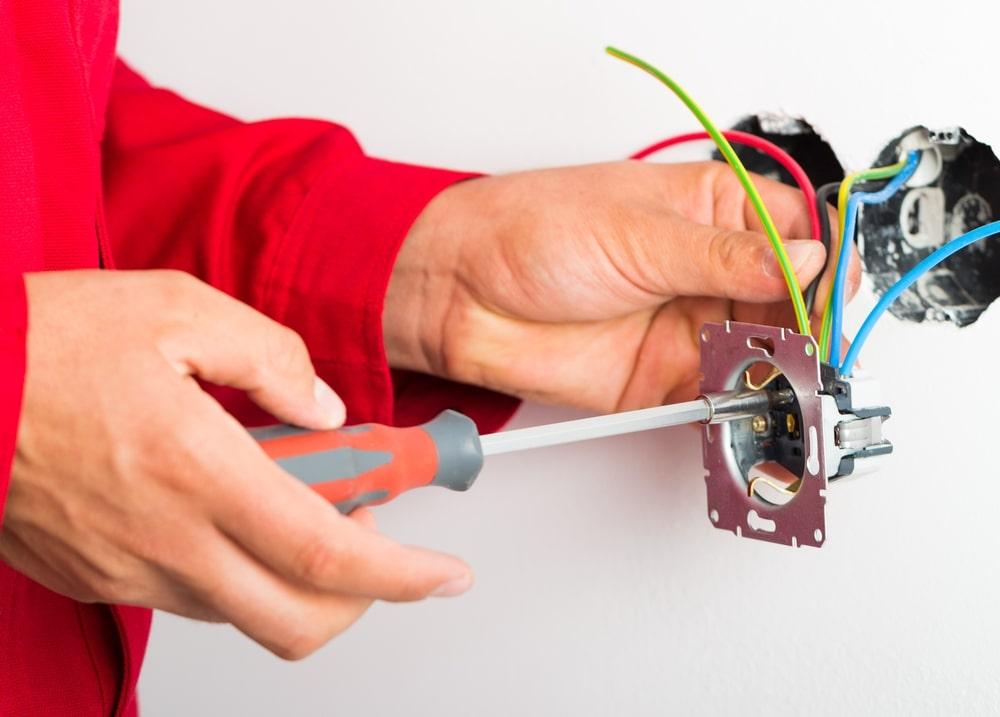A Guide to Electrical Repair is a good resource for do-it-yourselfers. It covers the basics of home wiring, the warning signs of electrical failure, and the types of electrical devices and equipment. This manual can also help you learn about local and national codes, identify electrical warning signs, and other safety issues related to electrical systems and equipment. It also teaches you how to conduct minor electrical repairs in your home without calling a professional.

Basics of the Home Electrical System
When it comes to electrical repair, it’s essential to understand how your home’s electrical system works. Your home’s power source comes from a three-wire panel, which supplies 110-volt power for lighting and 120-volt or 220-volt power for appliances. When a circuit has a problem, the breaker trips, shutting down the electricity to all machines and devices connected to the course.
The central panel is typically located next to the meter and serves as the distribution point for electrical circuits throughout your home. These circuits carry electricity to various parts of your house, including your refrigerator and heater, and then send it back to the service panel. Electrical circuits are made up of wires that are color-coded for easy identification. For example, hot wires are typically red or black, and neutral wires are light gray or white. Most circuits also include a grounding wire, which conducts electricity in the event of a ground fault and reduces the risk of severe electrical shock.
The main service panel, also known as the circuit breaker panel, contains individual circuit breakers. Circuit breakers will shut down power during a short circuit or an overload. Some older homes have fuses instead of breakers and work just as well as breakers. However, most new panels use breakers.
Signs of an Electrical System Malfunction
If you’re experiencing a burning smell while driving, it may be time to check your vehicle’s electrical system. A malfunctioning electrical system can lead to fires, which can be very dangerous. If this is the case, you should have your car towed to a mechanic’s shop as soon as possible.
First, you need to check the wiring. The easiest way to prevent this is to look for tree branches across a power line, a broken utility pole, or conductors on the ground. You can also inspect the wires themselves. Some cables are easily visible, but others may be hidden. For a more detailed diagnosis, you may need to use a time-domain reflectometer, which sends a pulse down a wire and analyzes the returned pulse.
You should immediately contact an electrician if you see signs of an electrical system malfunction. For example, if the wires are burned, the wiring is probably overheated and needs to be replaced. In addition, you may be able to smell burning materials around them. The smell signifies a malfunctioning electrical system; you should stop using it immediately. Otherwise, it could result in fire.
Types of Electrical Devices
Electrical repair near me experts are familiar with the various devices used in an electrical system. These devices include receptacles, fuses, and circuit breakers. They are the essential components of a power line and provide the proper electrical connection to a circuit. Receptacles can be a simple plug or complicated one that has multiple functions.
Electric current is the flow of energy through a conductor and is measured in amperes. The electrical current can be measured using a voltmeter or an ohmmeter. Different names know the two types of electrical devices but have some essential similarities. A voltmeter is a tool used to measure the amount of power that a machine can handle. An ohmmeter is another electrical testing tool that can measure resistance and the amount of electricity a device can take.
Another tool that electricians must have is a fishing rod. These tools are usually fiberglass and have hooks to make them easier to maneuver. They help electricians group multiple wires and connect outlets to the mains and ground. They also need to shut down electrical power in critical sections of the property. Lastly, an electrician needs a voltage tester to test outlets and determine whether power is back on.
Other tools used by electricians include needle-nose pliers, long-nose pliers, and diagonal cutting pliers. Having the right electrical tools will make a big difference in the overall quality of the project. Properly equipped electricians will be more efficient and produce better results.
Image by Depositphtos





